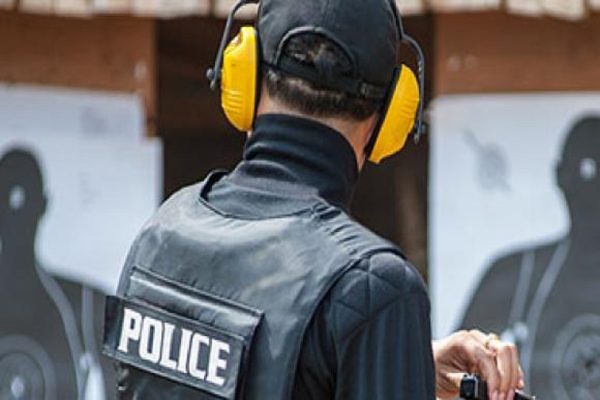Museums always try to balance education with experience. As public tastes shift, many museums look for new ways to connect with wider, younger, and more distracted visitors. One powerful tool they now use is large format printing — not just for signs, but to tell stories. Massive graphics now cover walls, floors, and ceilings, pulling visitors into exhibitions before they read a single word.
This article explores how museums use oversized graphics to attract, teach, and impress. You’ll see how scale shapes mood, guides visitors, and brings exhibitions to life. You’ll also discover how these graphics enhance storytelling, improve navigation, and create memorable moments for diverse audiences.
The Role of Visual Scale in Modern Exhibits
Modern museums go beyond glass cases and labels. Today’s visitors want to feel part of the story. Large visuals help museums turn blank walls into scenes, settings, and memories.
Three ways size adds power to exhibits:
- Pulls visitors in from hallways or across rooms.
- Surrounds collections with colour and shape that support the theme.
- Creates mood with light, pattern, and energy.
Big images don’t just show — they welcome, hint, and lead. For instance, a life-sized jungle backdrop can make a natural history exhibit feel like a trek through a rainforest. That’s the power of visual storytelling through scale. By changing the environment with a single print, museums invite people to experience rather than observe.
How Graphics Help Tell a Story?
Museums always tell stories. Some speak through ancient tools, some through art, and others through facts. Graphics help glue these parts together. With large format printing for museums and exhibitions, teams now craft full-wall scenes, oversized timelines, and creative maps.
Graphics support stories by:
- Tying items together with scenes or ideas from history or culture.
- Breaking down tricky topics using diagrams or pictures.
- Holding visual learners’ attention with colours and strong images.
When visitors walk into a gallery and see a massive ocean map stretching across an entire wall, they instantly grasp the exhibit’s theme before reading a word. A good visual becomes part of the story itself, not just something nice to look at.
From Wayfinding to Wow Factor
Museums always include signs to point the way. But when signs grow big and bold, they stop fading into the background. Instead, they shape how visitors explore a space.
Three ways big graphics guide movement:
- Point the body and eye toward the next stop.
- Mark the shift from one section to another.
- Stand as landmarks that visitors remember and share.
These visuals lead people without words. A well-placed mural teaches direction through design. When visitors recall their favourite parts of the museum, they often describe an image, not a label. Clear and creative signage invites flow rather than forcing it.
Designing for Impact, Not Noise
Big visuals grab attention. But when they shout too loudly, they distract. Museums that succeed with large graphics focus on purpose. They plan each wall, colour, and corner with care.
Strong visual planning includes:
- Matching visuals to meaning so nothing feels random.
- Leaving space between images and artefacts for breathing room.
- Balancing words and pictures to avoid clutter.
Smart design uses contrast and spacing to guide the visitor’s eye. When designers apply these ideas, exhibitions feel clean and focused, not chaotic or crowded. Every image should help visitors think, not just pause and look.
Types of Oversized Graphics and Their Common Uses
Here’s a quick guide to help museum teams choose the right type of graphic for the right job.
|
Graphic Type |
Common Use |
Where You See It |
|
Wall Murals |
Set the mood or give a sense of place |
Entrance walls, galleries |
|
Floor Decals |
Show paths or make zones playful |
Hallways, kids’ areas |
|
Hanging Banners |
Divide space or highlight themes |
Atriums, wide-open spaces |
|
Vinyl Wall Text |
Share big quotes or exhibit names |
Exhibit intros or features |
|
Scenic Backdrops |
Create photo spots or themed areas |
Special displays, exits |
Museums blend these tools into their spaces to make them feel fresh and alive. The best use them to make stories visible even before objects come into focus.
Why Museums in Singapore Lead This Shift?
Museums in Singapore often mix history with technology. They welcome many cultures, languages, and age groups. To keep exhibitions fresh, designers turn to large format printing Singapore specialists who help shape walls into learning zones.
Multilingual audiences benefit from bold visuals that show more than they tell. A huge image or layered map speaks across language lines. Singapore museums use graphics to bring people together through colour and design.
They also use these techniques to stand out in a fast-moving city full of attractions. A strong visual display can make a museum memorable even after a visitor steps back into the busy streets. Many museums are also designed with tourism in mind, using graphics to appeal to both locals and visitors.
Connecting Graphics with Visitor Memory
Great exhibits do more than share facts. They leave marks. Visitors often remember a striking image long after they forget the date or title. Large graphics work like bookmarks for the mind.
Big visuals stay in memory when they:
- Set a clear mood — joy, wonder, sadness, or surprise.
- Work as a photo zone — where visitors can post and talk about.
- Mark key points in a story — from start to change to end.
Visitors might not recall the name of a painting, but they’ll describe the enormous graphic that set the stage. These moments of recognition turn casual visits into personal experiences.
Sustainability and Reuse in Graphic Design
Museums juggle limited budgets. They need displays that stay sharp without permanent changes. That’s why many use eco-friendly, removable materials. New forms of large format printing make this possible.
Fabric banners, foam boards, or vinyl panels stay strong and light. Teams roll them up, move them to other shows, or repurpose them later. Many museums are now designed with a full plan, from installation to reuse to recycling.
This careful approach saves money and waste while keeping things exciting. It also supports museums’ growing focus on sustainability and environmental care. Creative teams now see reuse not as a limit but as a way to stretch creativity.
Challenges to Plan Around
Big graphics solve problems, but they also bring a few. If teams rush or skip details, the result may distract instead of delight.
Three common challenges:
- Lighting issues — glare can ruin even the best image.
- Wrong size choices — images may lose quality if enlarged poorly.
- Clashing with exhibits — visuals must support the star items, not hide them.
Solving these early makes the experience smoother for both visitors and staff. Testing in real space helps catch mistakes that digital previews miss.
Curators and Designers Must Work as One
Museum exhibits need both brains and beauty. Curators carry the story. Designers shape the setting. When they plan together, ideas show up stronger and clearer.
Strong teamwork includes:
- Clear story goals that everyone agrees on.
- Full knowledge of the space — walls, walkways, lighting, and crowd flow.
- Choosing the right materials for the exhibition’s time and size.
Great visuals don’t happen by accident. They rise from a shared goal and a well-drawn plan. Many top museums even run design workshops to align vision and layout. Communication keeps vision, space, and function working as one.
Using Graphics to Reach New Visitors
Museums compete with malls, movies, and screens. Big, eye-catching images grab attention outside the building as much as inside.
A building-size dinosaur or a six-metre astronaut makes people stop, stare, and take photos. That’s how large format printing for museums and exhibitions pulls new guests toward the doors.
Street-level graphics act as silent invitations. They show the fun and meaning waiting inside. Visitors who may not plan to enter often feel curious enough to try.
Closing Remarks
Graphics keep growing with technology. Digital walls, LED panels, and smart projections now blend with printed materials. These hybrid spaces mix old and new forms of storytelling.
Some designers explore texture too — layering cardboard, metal, or fabric onto walls to give depth. Others try motion-sensitive visuals that change as people pass by. As materials improve, museums gain more ways to shape emotion and space.
But even with all the change, the basics stay strong: clear design, big scale, and a message that matters.







